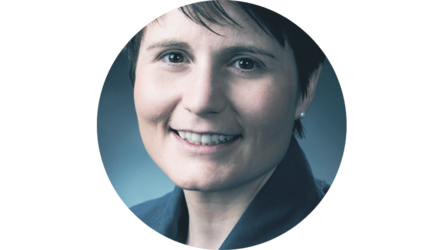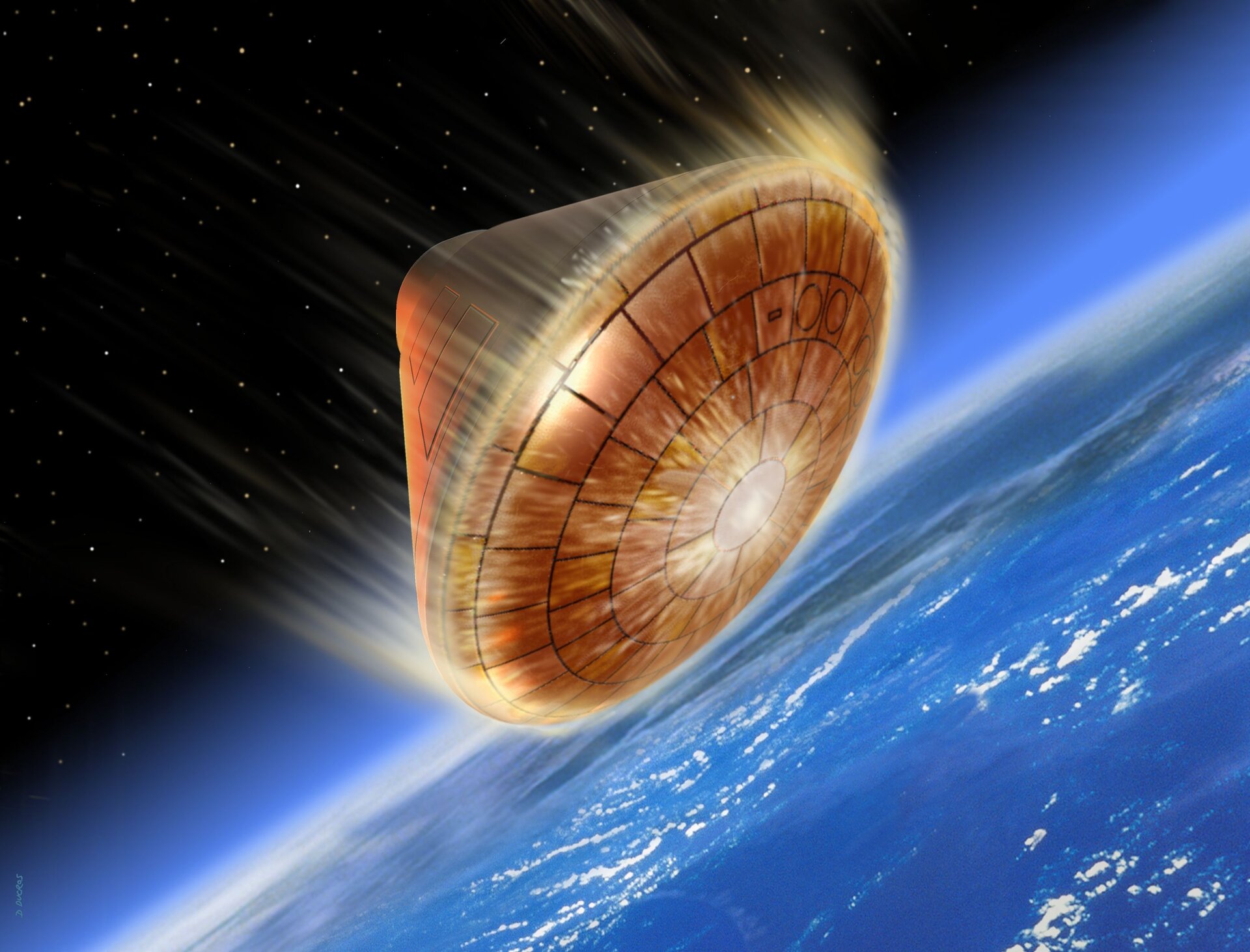Aerothermodynamics of aerocapture and high speed Earth re-entry
The Aurora Exploration Programme has recently completed studies of several robotic and long-term manned exploration missions involving aerocaptures and/or hypersonic entries of capsules into Mars and Earth atmospheres.
High velocities and a direct and severe entry into an atmosphere induce very high heat loads on a craft, passing through different flow regimes and thus involving different flow theories (kinetic, continuum etc.). Heat fluxes are high and phenomena such as ablation and radiation are strong. As a consequence, modelling these phenomena is a difficult task.
Within the different flux regimes of the entry, the stability of the capsule must be ensured for the sake of mission safety. Generally, the stability of blunt bodies is good at high Mach numbers but these shapes suffer a loss of dynamic stability at low supersonic and transonic Mach numbers.
The unsteady aerodynamic coefficients have to be predicted for this range of Mach numbers to analyse the behaviour of selected shapes from an aerodynamic point of view.
The only available solution to ensure the stability of the vehicle is to study selected vehicle shapes adapted to direct entry. This involves looking at radiation and ionization processes and related impacts which are essential to perform the design of the thermal protection system.
The main and final objective is to assess and improve the research, tools and methodologies for the design of heat shields and capsules for high-speed entry. Work will be focused on an Earth vehicle demonstrator but will help in addressing aerocapture issues.
In this framework, the activity can be split into two phases. First, past experience of the existing physical and numerical models for the phenomena affecting high-speed entry will be reviewed together with existing test facilities and their capabilities. The activity shall also allow the definition of requirements for measurement techniques, flight instruments, flow conditions and environments applicable to the study. Two vehicle shapes will be analysed for which only the cone angle will be different (45 and 60 degrees).
Within the second phase, technology applications will be described and the tool limits and potentials will be assessed. This phase will be mainly devoted to test campaigns and numerical modelling. The requirement and feasibility of developing new models and instruments will be evaluated along with the uncertainties involved. The possibility of performing accurate test campaigns both with ground facilities and in-flight will be analysed in order to validate and improve shape design and existing tools.
Whilst this activity will benefit from past experience from the ARD capsule and the Hermes Programme, Earth re-entry from a Mars trajectory is even more challenging because of the higher speed and higher loads to be faced. Hence this activity has to be integrated together with other related activities (TPS ablators) in the overall technology strategy towards the aim of returning samples back to Earth.
| Start |
Expected or actual duration | Status | Prime contractor |
|---|---|---|---|
| Upcoming KO | 14 months | To be kicked-off | As yet unknown |















 Germany
Germany
 Austria
Austria
 Belgium
Belgium
 Denmark
Denmark
 Spain
Spain
 Estonia
Estonia
 Finland
Finland
 France
France
 Greece
Greece
 Hungary
Hungary
 Ireland
Ireland
 Italy
Italy
 Luxembourg
Luxembourg
 Norway
Norway
 The Netherlands
The Netherlands
 Poland
Poland
 Portugal
Portugal
 Czechia
Czechia
 Romania
Romania
 United Kingdom
United Kingdom
 Slovenia
Slovenia
 Sweden
Sweden
 Switzerland
Switzerland


























